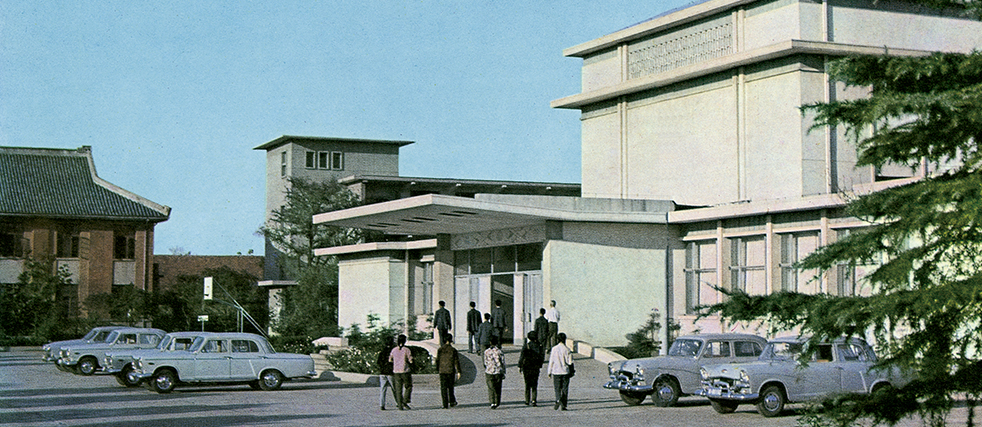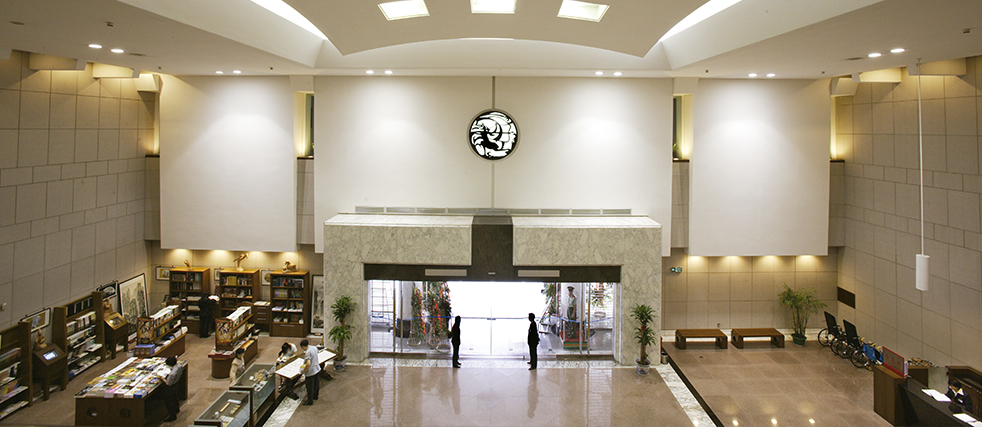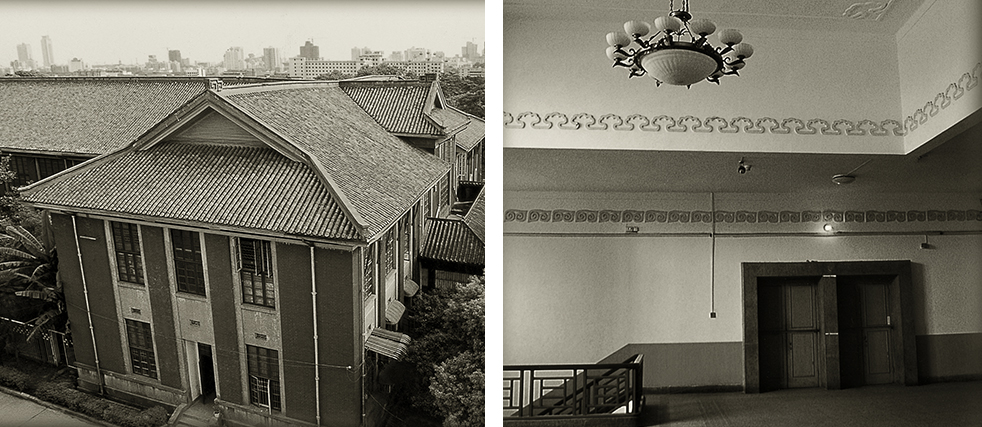History
Founding
Hunan was one of the early provinces in China to establish museums.
1897: Chenzhou Society founded the Chenzhou Society Museum, which came to a premature end due to the failure of the Hundred Days’ Reform (a failed 103-day national, cultural, political, and educational reform movement from 11 June to 21 September 1898 in late Qing Dynasty China).
1904: with considerable encouragement from Zhao Erxun, then governor of Hunan Province, gentries such as Liang Huankui and Long Furui raised fund to establish a museum in Changsha, the capital of Hunan Province. Together with the library and the education building, the complex was named “Hunan Library & Education Museum”, which mainly featured manikins and animal models. After about one year of operation, the museum was put to an end.
June 24, 1924: Hunan Provincial Education Society Museum was opened.
1927: it was renamed as “Hunan Provincial Museum”
1930: it was destroyed in the war and was never re-established.
Start
1951: Preparatory Office of Hunan Museum was established in Baiqinyuan, Liufang Hill, Changsha.
1956: Hunan Museum, located in the beautiful Martyrs’ Park in the Northwestern part of Changsha, was founded and opened to the public.
At the beginning of its founding, the museum aimed to develop into an institution featuring local history and other various aspects. It collected and displayed cultural relics and specimens which could showcase Hunan’s history, culture, folk customs, craftsmanship and natural resources. Six special displays were staged to provide visitors with a systemic knowledge of the treasures in the museum, namely Display of Hunan Handicrafts, Display of Hunan Mineral Resources, Display of Hunan Agricultural Resources, Display of Chu-state Cultural Relics in Hunan, Display of Ancient Currencies of China and Display of China’s Ancient Ceramics.
From 1959 to 1966: Display of the History of Hunan People’s Revolution was staged and opened to the public.
Development
1972: archeologists discovered a tomb dating back to Western Han Dynasty at Mawangdui, at the eastern suburb of Changsha.The excavation of three Mawangdui Han tombs from 1972 to 1974 was one of the major archeological discoveries in China and even the whole world. It was of great significance for the development of Hunan Museum. Thousands of fine pieces of cultural relics and a well preserved female corpus were excavated from the tombs, making the museum gaining worldwide attentions. The government of China and the whole society gave full support to this excavation and preservation of these cultural relics. The collections and exhibitions of Hunan Museum had been tremendously improved.
1973: under the instruction of the State Council, the museum constructed a new storage covering 3,510 square meters, which was later converted into a venue for preservation and exhibition of cultural relics. This storage had played a vital role in the preservation and exhibition of cultural relics unearthed from Mawangdui Han Tombs for nearly three decades.
Transformation
With more and more archeological discoveries in Hunan, the proportion of unearthed cultural relics increased dramatically, especially after the excavation of Mawangdui Han Tombs. It became very obvious that Hunan Museum had developed into an institution featuring history and archeology.
1971: the museum transferred its mineral specimens to Bureau of Geology of Hunan Province.
1979: the museum loaned its wildlife specimens to Changsha NO. 1 Middle School. After this, the museum had successfully transformed from a nature and history museum to a museum featuring only historical artifacts and their display.

Development and Innovation
1999: the new exhibition building of the museum, which cost 120 million RMB and co-funded by China’s Central Government and Hunan People’s Government, was completed. This was a new starting point for the museum at the turn of the century and pushed forward the all-round development of the museum. At the beginning of the 21st century, the museum positioned itself as a “history and art museum”. By taking advantage of the opening of its new exhibition building, it was bold in innovation and forged ahead with determination. There were one permanent exhibition and five themed exhibitions, including Exhibition of Cultural Relics from Mawangdui Han Tombs, Bronzes of Shang & Zhou Dynasties unearthed in Hunan, Pottery and Porcelain from Famous Kilns in Hunan, Paintings of Ming & Qing Dynasties (staged alternatively with Calligraphies of Ming & Qing Dynasties) and Ten New Major Archaeological Discoveries in Hunan. Exhibition of Cultural Relics from Mawangdui Han Tombs was awarded one of the top ten fine exhibitions in China during the year 2003 to 2004. Hundreds of temporary exhibitions have been staged by the museum, thus the image of an exhibition planning institution with high professionalism has been formed in the mind of the public. Through the implementation of comprehensive quality management, meticulous management and people-oriented service, the museum established the advanced management mode and conducted many successful experiments, which created considerable impact among the museum community in China. Furthermore, the museum actively carried out institutional mechanism reform and launched three rounds of internal restructuring in 2002, 2005 and 2009 respectively, which greatly invigorated the staff of the museum. As a result, the museum achieved leapfrog development, gaining great social benefits and economic benefits.
2008: as a public cultural institution, the museum adopted the free admission policy on March 20, 2008. In order to provide high quality public cultural services to the people, the museum maintained its awareness of social responsibility and strictly adhered to its mission so as to extend the quality service to every visitor. It conducted new explorations and practices regarding the implementation of the free admission policy, so as to make its due contributions towards the great development and prosperity of China’s socialist culture.
2008: the museum was selected as one of the first batch of national first-level museums.
2009: the museum was selected by China’s Ministry of Finance and State Administration of Cultural Heritage as one of the eight National Key Museums co-funded by Central Government and Hunan People’s Government.

Expansion and Fast Growth
2010: in order to meet the increasing cultural need of the public, CPC Hunan Provincial Committee and Hunan People’s Government made the decision to carry out the renovation and expansion project of Hunan Museum on its original site after in-depth research and discussions led by experts.
2012: in order to ensure the smooth progress and the quality of the renovation and expansion project as well as avoid safety hazards regarding visitors and cultural relics, the museum was under closure since June 18, 2012.
November 2017: the new exhibition building of Hunan Museum was opened to the public.
The design of the new exhibition building of Hunan Museum was inspired by “Dingsheng Dongting (literal meaning: the famous lake of Hunan at its best period)”. Based upon the existing exhibition building, the design put emphasis on symmetry, simplicity, solemnness and unity. By integrating the culture of Hunan and the traditional and modern cultures of China, the design presented a sense of the perfect combination of the old and the new elements. After this renovation and expansion project, the museum is expected to receive about 3 million visitors each year, with its reception and service capabilities substantially increased. There will also be radical improvement in terms of the management and preservation of collections, exhibitions, and the facilities of visitors’ educational services. Meanwhile, the reform of the management system has been carried out in the museum so as to enhance its both “software” and “hardware” capabilities. These measures have laid a solid foundation for the new and rapid development of Hunan Museum.



